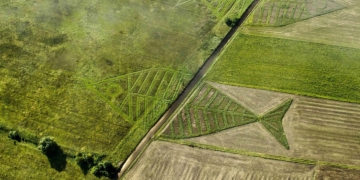According to Science Alert, a new study led by physicist Sai Kiran Rajedran from the University of St Andrews (Scotland, United Kingdom) has presented a remarkable stone found in an ancient quarry in Namibia, containing special copper oxide crystals of extremely high quality.
The crystals extracted from the ancient gemstone can be polished and thinned to less than the width of a human hair, then sandwiched between two mirrors, creating a “light trap.”

The ancient gemstone in Namibia is a treasure for science – (Photo: UNIVERSITY OF ST ANDREWS)
This type of copper oxide is a superconductor, allowing electrons to move without any resistance, and contains giant Rydberg excitons. An exciton is a bound state of an electron and an electron hole, attracted to each other by Coulomb electrostatic forces. It is electrically neutral and has the ability to “pair” with light.
This will help create Rydberg polaritons, a type of large hybrid particle between light and matter. This strange series of particles is considered the key to future quantum computers. It will be applied in quantum circuits, enabling quantum computers to store, process, and transmit information at the speed of light.
The emergence of quantum computers using this type of particle will bring about exponential improvements in computational power, allowing them to solve extremely complex calculations beyond the reach of human capability today, resulting in a leap forward in science and technology.
The authors note that the methods outlined will need further refinement, including how to utilize hybrid particles in quantum circuits. However, importantly, they have established the fundamentals.
The research was recently published in Nature Materials.





















































